Projects river habitat projectsA number of projects on the River Meon with the aim of improving the habitat in the river and on the banks for trout and all wildlife, and making the river more resilient to droughts and floods. These projects have been supported by the landowners, the South Downs National Park and the Environment Agency as well as the Wild Trout Trust’s Pasco James memorial fund.
The projects include:
Midlington farm between Soberton and Droxford
The river banks on this section of the Meon had been broken down by cattle which meant that the river channel had become very bare, wide and shallow, providing very little cover for fish to escape from herons and egrets, or habitat for insects. Wide, shallow channels with no plants also warm up very quickly and can result in lethal temperatures for river wildlife in a hot, dry summer.
The Wild Trout Trust made the river narrower, created deep pools, installed flow deflectors in the form of large tree trunks, and fenced out the cattle to allow plants on the banks to recover from trampling and grazing. The result is there are now lots of plants and insects on the banks and in the river, refuges for fish from predators, and a river that will stay cool in summer.
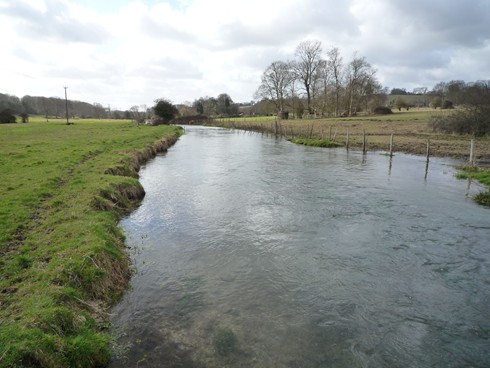 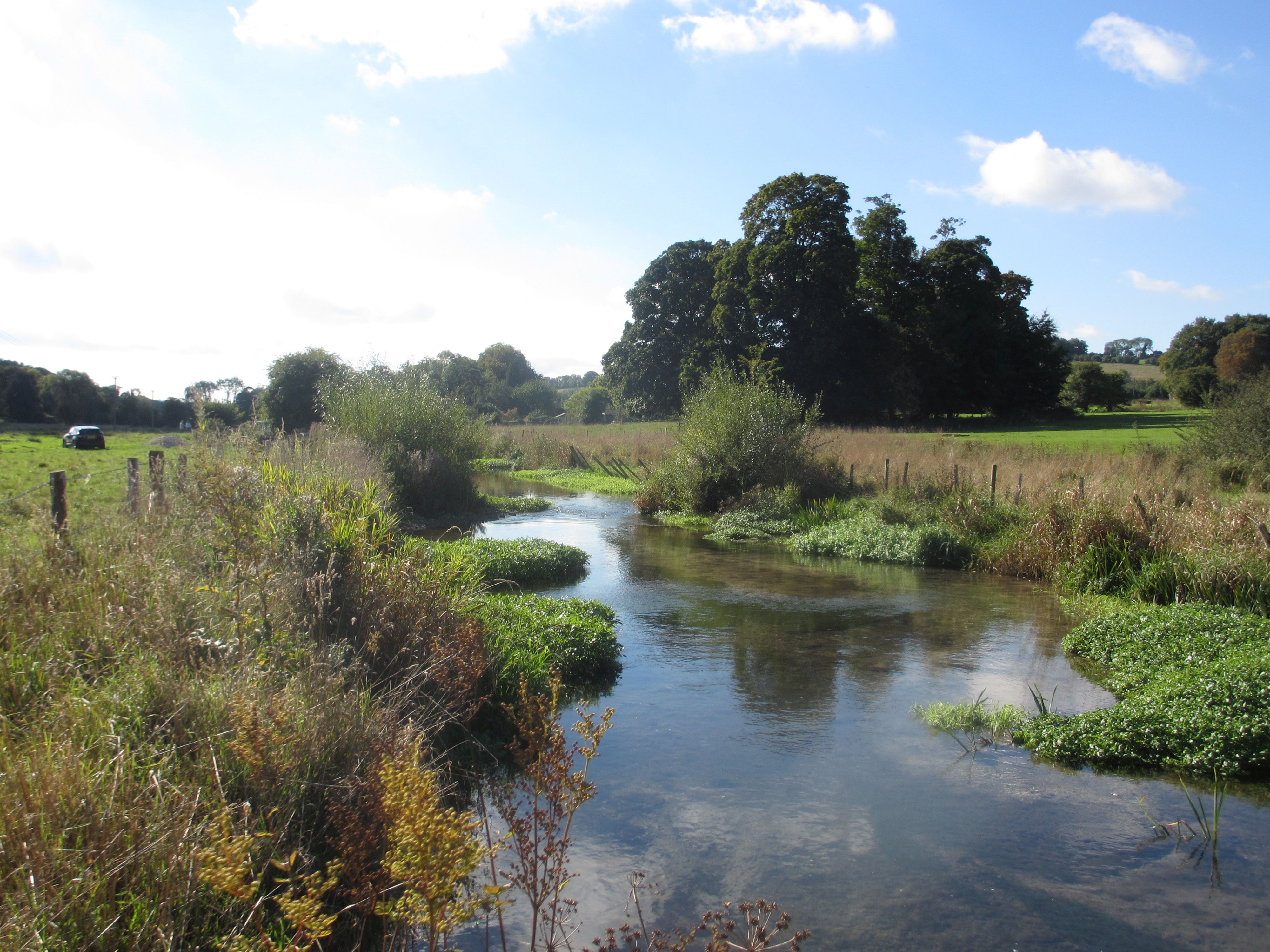
Meonstoke Church Green
Pasco James loved the River Meon. He died in 2010 at the age of 22, and his friends and family made donations to the Wild Trout Trust in his memory. The WTT looked for a project that would be a suitable memorial for Pasco - one that was publicly accessible and reflected his love of the river, its trout and all the wildlife that makes the river so special. The Meon at Meonstoke fitted the bill and the Churchwardens from St Andrew’s Church were delighted to help by giving access from ‘The Green’.
The river next to the A32 at Meonstoke was a wide, shallow concrete channel bounded by walls and topped with a weir that presented a challenge to trout wanting to move upstream to spawn. The project involved modifying the weir and creating of a new wildlife friendly river bank. ‘Soft engineering’ techniques were used to construct a new section of river bank planted with native aquatic plants that will provide a haven for fish and aquatic invertebrates as well as birds and small mammals. The volunteers who run the Church Green open space continue to manage and improve the river for wildlife based on some simple techniques that they learned from the Wild Trout Trust.
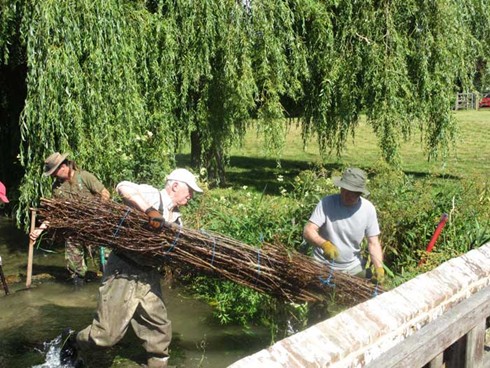 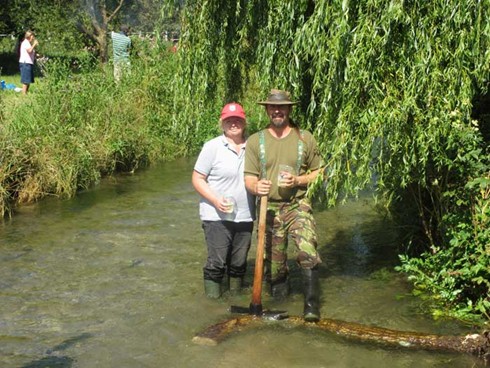 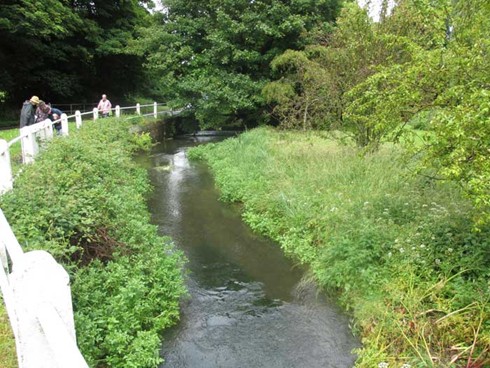
East Meon
The river in the pretty village of East Meon has flowed through a concrete-lined channel for several decades - a biologically sterile environment with few plants, insects or birds. Working with the Parish Council and the South Downs National Park, the Wild Trout Trust has helped create a more wildlife friendly channel on a 40 metre section of the river between The George and the footbridge upstream.
A meandering stream has been defined by two lines of stones bonded to the concrete bed of the river, with stone and gravel berms planted with a range of local chalkstream plants. The result is a more natural looking stream which should greatly improve the number of plants, insects, birds, bats and maybe trout too in this reach of the Meon. An extensive flood modelling exercise showed that the work poses no increased flood risk to the village - an important consideration for residents who live very close to the river. If this initial section is deemed to be success, the next project will be to carry out similar changes to the section above the footbridge as far as the allotments.
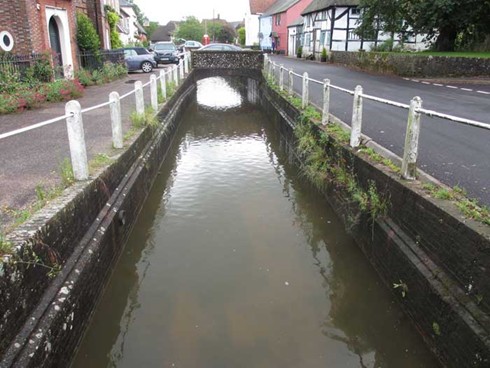  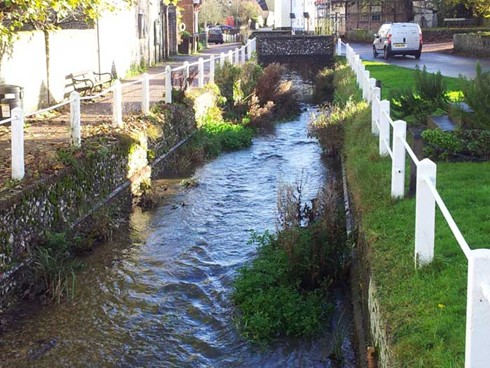
Water vole re-introduction - The return of ratty on the River MeON The original project started in 2009 with the objective of controlling non native American mink from the area in preparation for water vole reintroduction.
A network of rafts specially designed to control mink and supported by a team of volunteers have been placed throughout the river catchment monitoring progress with bi-monthly phone calls to landowners and regular visits to collect repair and return rafts. Surveys to confirm habitat suitability and to monitor progress have also been undertaken.
Due to the absence of evidence of water voles in the Meon Valley, it was considered that they are locally extinct. It was very unlikely that water voles would have re-colonised the Meon naturally. Therefore establishment of a new water vole population with reintroductions at key sites, with continued American mink monitoring throughout the valley, land and river management advice, and liaison with the local community.
Water voles have been released during spring and summer with the release sites and adjacent land will be monitored during the same year. Surveys and further releases will then take place between April and July over the next 5 years along the river corridor. Mink trapping will continue each year and records will be gathered from volunteers and staff to ensure success.
This is the largest scale attempt of water vole reintroduction in the UK and this project highlights the fact that species conservation needs to operate at a landscape scale with the full cooperation of a wide range of stakeholders and individuals to maintain success.
This project would not be possible without the dedication and enthusiasm of landowners, river keepers and volunteers throughout the catchment of the river.
The work has been funded and managed by South Downs National Park Authority, Environment Agency and Hampshire & Isle of Wight Wildlife Trust with support from Natural England, Game and Wildlife Conservation Trust and contributions from Hampshire County Council.
 Click on the water vole to watch a video of their release into the Meon in 2015
Riverfly partnership
The River Flying Squad
 Volunteers, anglers and conservationists in the Meon Valley have learnt about monitoring the health of water courses as part of a national program called the River Fly Partnership. Volunteers, anglers and conservationists in the Meon Valley have learnt about monitoring the health of water courses as part of a national program called the River Fly Partnership.
Invertebrates of rivers provide the essential component to river ecology and the species and numbers act as indicators to the health of the river.
Nationally launched in March 2007, the Riverfly Partnership promotes and manages the Riverfly Monitoring Initiative. The one-day workshop enables those committed to monitor the biological water quality of their local waters to do so by providing a simple monitoring technique which groups can use to detect any severe decline in river water quality.
The monitoring scheme, used alongside routine monitoring by the Environment Agency, ensures that water quality is checked more widely and action taken at the earliest opportunity should any water quality issues be detected, and it also acts as a deterrent to incidental polluters.
Clean Water Partnership

Portsmouth Water are working with the Environment Agency and Natural England to provide support to farmers to ensure that the rivers, lakes, groundwater and coastal waters of East Hampshire and West Sussex are protected and improved for current and future generations to enjoy. The River Meon and the groundwater resources in the Meon Valley are one of the important areas that they cover, with the aim of reducing pollutants, particularly nitrates, from entering the water environment.
Excessive nitrates in rivers and lakes cause algal blooms and disrupts the ecology of rivers, lakes, estuaries and harbours. Too much nitrate in groundwater can also cause problems with drinking water.
The Clean Water Partnership offers free and confidential advice to farmers, plus workshops and access to grants to help reduce the impact of agriculture on water quality. For more information, check out their website: https://www.cleanwaterpartnership.co.uk/free-services |